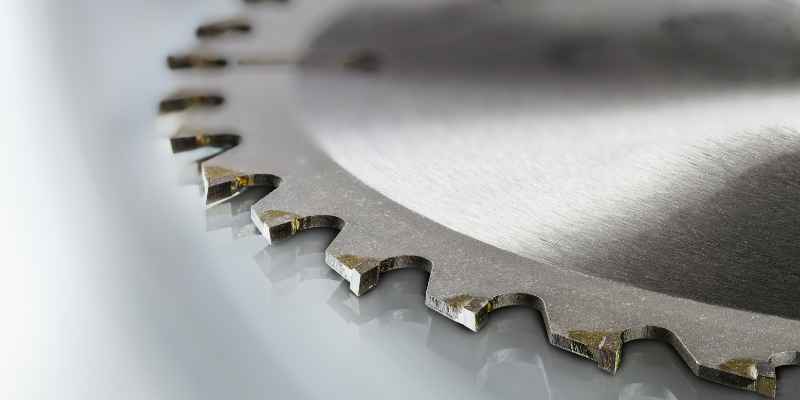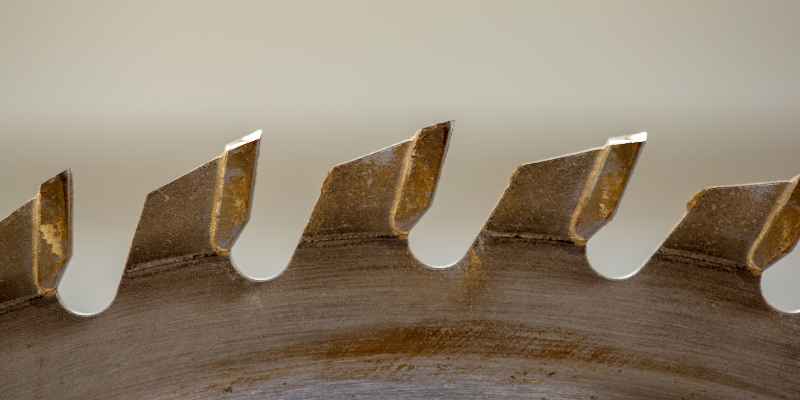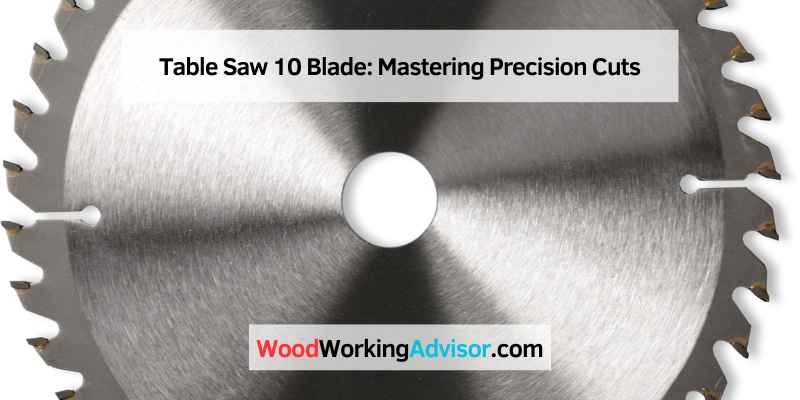A Table Saw 10 Blade is a versatile tool that offers precision cutting for various materials. The 10-inch size allows for efficient and accurate cuts in woodworking projects.
With its sharp teeth and sturdy construction, this blade is perfect for both professional and DIY use. When looking to upgrade your table saw blade, consider the Table Saw 10 Blade for its durability and performance. With its 10-inch diameter, this blade provides precise cutting for woodworking projects.
Whether you are a seasoned professional or a hobbyist, this versatile tool is a must-have in your workshop. With its high-quality construction and sharp teeth, the Table Saw 10 Blade ensures clean and accurate cuts every time. Upgrade your cutting experience with this reliable and efficient blade.
Choosing The Right 10-inch Blade
When it comes to selecting the right 10-inch blade for your table saw, understanding blade types, tooth count, configuration, and materials is crucial.
Understanding Blade Types
Blades come in various types such as rip, crosscut, combination, and dado. Each type serves specific cutting needs.
Considering Tooth Count And Configuration
Tooth count and configuration affect the type of cuts you can achieve. A higher tooth count provides cleaner cuts.
Looking At Blade Materials
The material of the blade impacts its durability and sharpness. Carbide-tipped blades are popular for their longevity.

Setting Up Your Table Saw
When setting up your table saw with a 10-inch blade, ensure the blade is aligned to the miter slot for accurate cuts. Adjust the blade height and fence position based on the desired cut, and always wear appropriate safety gear during operation.
In the realm of woodworking, setting up your table saw is a crucial step for accurate and safe cutting operations.
Aligning The Blade And Fence
To ensure precision in your cuts, be sure to align the blade and fence parallel to each other.
Adjusting The Blade Height And Angle
Adjust the blade height and angle to match your cutting requirements for optimal results.
Remember to always prioritize safety when setting up your table saw to avoid accidents during operation.
Mastering Precision Cuts
When it comes to woodworking, precision is key. Whether you are a professional carpenter or a DIY enthusiast, the table saw 10 blade is an essential tool for achieving accurate and clean cuts. With the right techniques and knowledge, you can master various types of precision cuts using this versatile power tool.
Making Rip Cuts
A rip cut is a type of cut that goes along the length of the wood grain. It involves cutting a piece of wood parallel to its natural growth rings. With a table saw 10 blade, making rip cuts becomes a breeze. Simply adjust the fence to the desired width and guide the wood through the blade. Remember to always wear safety goggles and keep your hands away from the blade.
Creating Cross Cuts
Cross cuts are cuts that go across the wood grain, perpendicular to the growth rings. To create cross cuts using a table saw 10 blade, use a miter gauge or a crosscut sled. Set the angle and position of the wood, ensuring it is firmly against the fence. Push the wood smoothly across the blade, maintaining a steady pace to ensure a clean and precise cut.
Achieving Miter Cuts
Miter cuts are angled cuts made at the end of a piece of wood. They are commonly used for creating joints or corners in frames and moldings. To achieve miter cuts with a table saw 10 blade, use a miter gauge or a miter sled. Set the desired angle on the gauge, secure the wood against the fence, and carefully guide it through the blade. Take your time to ensure the accuracy of the cut.
Doing Bevel Cuts
Bevel cuts are tilted cuts made through the thickness of the wood. They are commonly used for creating angled edges or joinery. To do bevel cuts with a table saw 10 blade, adjust the blade tilting mechanism to the desired angle. Make sure to secure the wood firmly and guide it through the blade smoothly. Be extra cautious when working with bevel cuts, as they require precision and control.
Mastering precision cuts with a table saw 10 blade is an essential skill for any woodworker. By understanding the techniques for making rip cuts, creating cross cuts, achieving miter cuts, and doing bevel cuts, you can confidently tackle any woodworking project with accuracy and finesse.

Common Issues And Troubleshooting
When using a table saw, it’s essential to be aware of common issues that may arise, as well as how to troubleshoot them. This will not only ensure the efficiency of your work but also maintain a safe working environment.
Preventing Kickback
Kickback is a common issue when using a table saw, and it can be dangerous if not properly prevented. To avoid kickback, make sure the blade is sharp and clean, the ripping fence is parallel to the blade, and use a riving knife or splitter. Always stand to the side of the blade and never directly behind the material being cut.
Dealing With Wood Burns
Wood burns can occur when the blade moves too slowly through the material, or if the blade is dull. To prevent wood burns, ensure the blade is sharp and properly aligned. Additionally, adjust the feed rate to maintain a steady cutting speed without forcing the material through the blade.
Fixing Blade Wobble
If your table saw blade wobbles, check for loose arbor nuts or a damaged blade. Tighten the arbor nuts securely and if needed, replace the blade. Inspect for any debris or build-up on the arbor or flanges and clean as necessary. Always ensure the blade is properly installed, and the arbor is in good condition.
Frequently Asked Questions For Table Saw 10 Blade
What Are The Different Types Of Blades For A Table Saw?
There are various types of blades for table saws including rip blades, crosscut blades, combination blades, and dado blades. Each type is designed for specific cutting tasks, so it’s important to choose the right blade for the job at hand.
How Do I Choose The Right Blade For My Table Saw?
To select the right blade for your table saw, consider the type of cuts you need to make, the material you’re working with, and the desired finish. For example, if you’re working with hardwood, a rip blade may be best, while a crosscut blade is ideal for softer woods.
What Are The Safety Precautions For Using A Table Saw Blade?
When using a table saw blade, always wear eye protection and use a blade guard. Avoid wearing loose clothing or jewelry and keep your hands a safe distance from the blade. Additionally, ensure the blade is properly aligned and securely fastened before operation.
How Do I Maintain And Sharpen A Table Saw Blade?
To maintain and sharpen a table saw blade, regularly clean off any debris and use a blade-cleaning solution if necessary. When sharpening, follow the manufacturer’s guidelines and use a suitable sharpening tool to achieve the optimal cutting edge. Regular maintenance helps prolong the blade’s lifespan and ensures efficient cutting results.
Conclusion
To summarize, the Table Saw 10 Blade is an essential tool for any woodworking enthusiast. Its precision cutting ability and durable construction make it a must-have for both professional and DIY projects. With its user-friendly design and versatile features, this table saw blade is sure to enhance your woodworking experience.
Whether you’re cutting through thick hardwood or delicate materials, the Table Saw 10 Blade delivers accurate and clean cuts every time. Upgrade your woodworking game today with this powerful tool.


